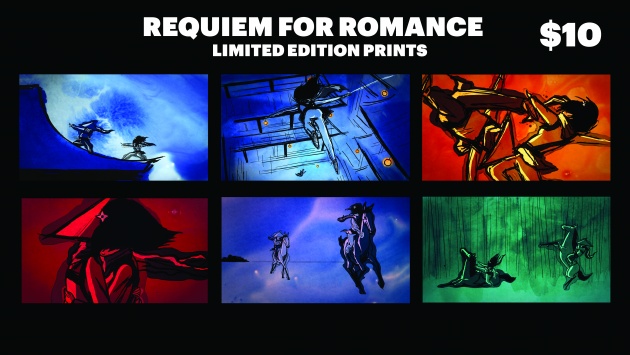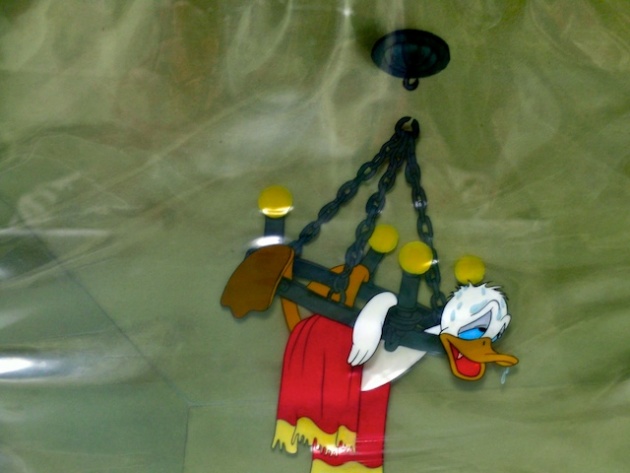As an independent animation filmmaker it is sometimes difficult to find ways to earn money to pay back for the time, money and resources used to make the films.
One of the big disadvantages of animation filmmaking is that animation takes a really long time to create because it is a frame by frame technique. Each image, scene, and sequence must be carefully thought out and constructed, requiring an incredible amount of labour. But, on the flip side of that, one of the advantages of creating animation, is that each frame is a piece of artwork, which can be sold after the production.

In the old days, animation was inked on clear acetate and colours were painted directly on each sheet. At the end of the production, a still frame from the film would be created by placing the finished background underneath, and all of the inked and painted character and prop layers on top. It would be placed in a frame and sold as a collector's item to generate some much needed revenue.

In the modern age, most animated films are created through some sort of digital technique.

Therefore, a great option is to select some of the most exciting or appealing images from the film, and create limited edition digital prints on high quality paper. Number them and sign them. Although this is not nearly as valuable as a single original acetate frame, it still provides people with something of quality and at an affordable price.
A good strategy is to always bring them to any screening or special event where the film will play for the audience. This way, if the audience likes the film, they will have an opportunity to take a physical piece of the film with them, to have something for their home or apartment wall.
In order to make some decent sales, the space provided at the venue, table location and product placement is very important. I usually write an email well in advance of the festival screening to get in touch with the festival's organizers to let them know that I will need a table in the foyer or atrium of cinema where my film will be the screening. Since generally, film festivals are unable to share profits from ticket sales, and many times they are also unable to pay for accommodation or travel fees, usually they are quite willing to simply provide a table to help us sell our merchandise.

The flow of people traffic in and out of the cinema is a very important detail. Generally, people don't buy prints or merchandise before a screening. They aren't accustomed to the idea, therefore, they might look at the merchandise before the screening, but they won't buy. They might like a particular image, but will think about it in the back of their minds as they watch the films. If it turns out that they like the film, they will most likely come by the table after the screening to take a second look. This is the most likely time for a person to buy.
However, sometimes screening schedules are so packed that the following projection must start almost immediately after your projection, thus the cinema organizers decide to usher people out from another exit. This in effect, prevents many of the patrons who watched the film from seeing the merchandise a second time.
It's an quite important detail to coordinate with the screening organizers to make sure that the prints will be available wherever the audience exits from the screening.
The last important detail is to mention the sale of the prints during a Q&A after the screening. In some rare cases, the festivals are pressed for time, and don't provide a Q&A, and this will result in fewer sales, simply because less people will be aware of the merchandise for sale.
In short, make the artwork good quality, in a variety of colours, and sell it for an affordable price. Good luck!



